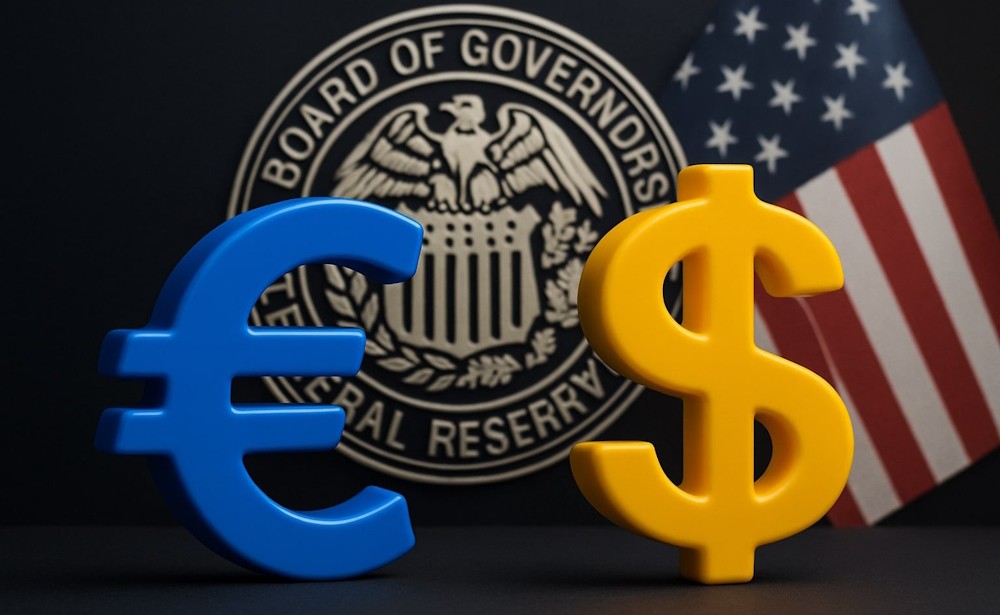The EUR/USD pair is currently under pressure, trading around 1.1615, marking its lowest point since early September. This decline is largely attributed to increasing political instability in France and a resurgence in the U.S. dollar, which are both significantly impacting the common currency. Sellers have retained dominance through midweek, prolonging a three-day decline that has diminished the pair’s value by nearly 1.2%. The recent decline is attributed to the resignation of French Prime Minister Sébastien Lecornu, an occurrence that has cast a shadow of uncertainty over Paris and heightened concerns regarding a possible credit downgrade. Rating agencies have indicated that France’s fiscal deficit and debt trajectory—anticipated to reach 111% of GDP by 2025—may lead to a negative outlook review should political gridlock continue. The decline in investor confidence within the eurozone has significantly accelerated, leading to a notable shift of capital towards U.S. assets and bolstering the dollar’s status as a preferred global reserve currency.
The recent appreciation of the U.S. dollar indicates a tendency towards risk aversion; however, it is primarily driven by external weaknesses rather than domestic strength. The DXY index increased by 0.35% to 98.71, achieving its third consecutive daily rise; however, experts observe that this movement is more defensive in nature than indicative of growth. The ongoing U.S. government shutdown, now in its second week, has resulted in a lack of essential macroeconomic data, thereby complicating the Federal Reserve’s evaluation of actual economic conditions. Futures markets continue to reflect a 95% probability of a further 25-basis-point rate cut before the end of the year, following the reduction in September. Meanwhile, Fed officials such as Atlanta’s Raphael Bostic and Governor Adriana Kugler highlight the importance of data dependence in the context of ongoing policy uncertainty. In this environment, the dollar gains from safe-haven demand instead of yield advantage, with 10-year Treasury yields remaining stable at approximately 3.88%. The recent slowdown in factory output and the flat labor participation rate in the U.S. economy highlight a contrast with the dollar’s firm tone, indicating that it is the euro’s fragility—not U.S. strength—that is influencing the pair’s decline. The euro’s weakness is fundamentally tied to the dynamics of continental politics. France is facing a leadership crisis that has compelled President Emmanuel Macron to evaluate the possibility of a technocratic cabinet or the option of snap elections, as public trust continues to diminish. French 10-year bond yields increased to 3.60%, rising from 3.51% at last Friday’s close, indicating heightened investor concerns regarding fiscal credibility. The gap between French and German bonds has expanded to 78 basis points, marking its highest level since 2012, which has sparked concerns of a potential fragmentation episode similar to the eurozone debt crisis. The euro has experienced significant setbacks, as evidenced by the EUR/USD decline of nearly 4% since mid-September.
In August, Germany’s factory orders experienced a decline of 0.8% month-on-month, reversing the modest rebound observed in July and indicating stagnation within Europe’s industrial sector. The year-on-year growth of 1.5% provides minimal reassurance in light of escalating energy costs and subdued demand from China. The Sentix investor confidence index has shown improvement, rising to -5.4 from -9.2; however, it continues to remain in negative territory for the 11th consecutive month, underscoring the fragile sentiment landscape within the eurozone. The European Central Bank is currently in a challenging position, facing the dual pressures of declining fiscal stability and a slowdown in inflation that supports a cautious approach to policy adjustments. President Christine Lagarde emphasized that disinflation is advancing “as expected,” with headline inflation projected to be around 2.2% by the end of the year; however, there are concerns in the market regarding the ECB’s capacity to navigate a fragmented fiscal environment. Internal models indicate that a 10 basis-point widening in French spreads could reduce euro-area GDP growth by 0.03% over the upcoming year. As the ECB persists with its PEPP reinvestments aimed at stabilizing sovereign bonds, there is growing concern among traders regarding the central bank’s capacity to manage potential political contagion. Lagarde’s upcoming address this week, along with remarks from Governing Council members Holzmann and Villeroy de Galhau, will be pivotal in determining the near-term trajectory of EUR/USD. If their tone remains cautious, the euro may continue its decline towards 1.1575, which is the next significant technical support level.
EUR/USD exhibits a distinct bearish trend. The pair has breached its 1.1650 support level, thereby nullifying the ascending trendline that linked the lows from May and August. Momentum indicators indicate robust downside control: the 14-day RSI is positioned near 40, nearing oversold territory but not yet signaling exhaustion, while the MACD histogram persists in widening negatively. The 200-period moving average has dipped below the 50-period, indicating a bearish crossover that reinforces the short-term downtrend structure. The immediate support is positioned at 1.1575, succeeded by 1.1490, with both levels indicating possible inflection points. Resistance is observed at 1.1650, which has now become a limiting factor, followed by another level at 1.1720. A significant breakout at this point would be essential to regain bullish momentum. Futures data indicate a notable shift in market sentiment: open interest in Euro FX futures decreased by 1,560 contracts, while volume in December 2025 expiries surged to 144,359, highlighting an increase in speculative positioning anticipating further downside.

